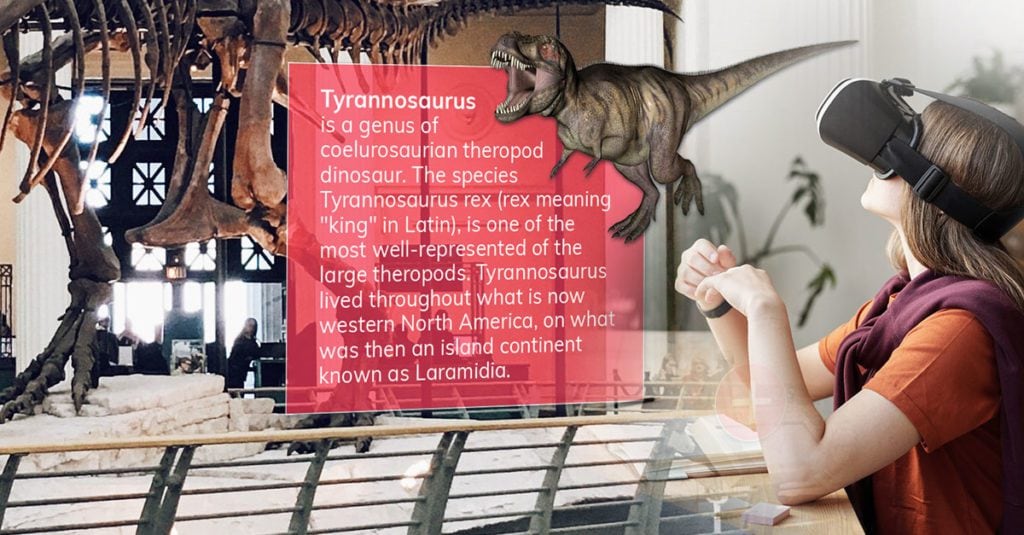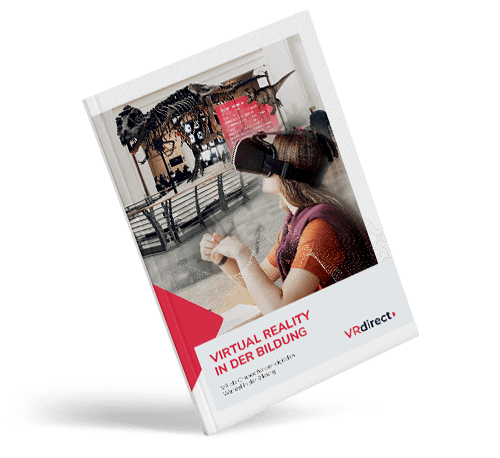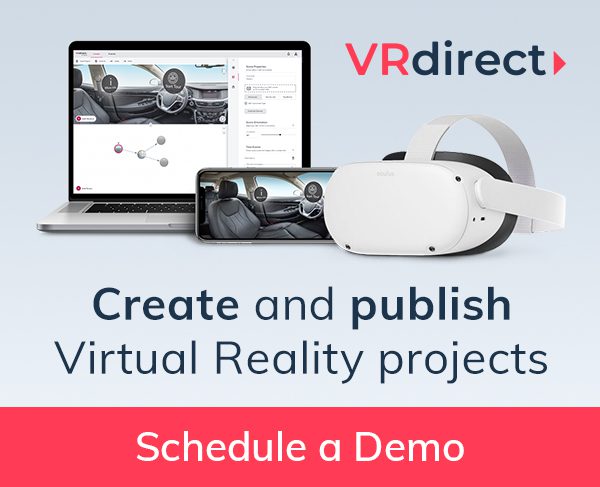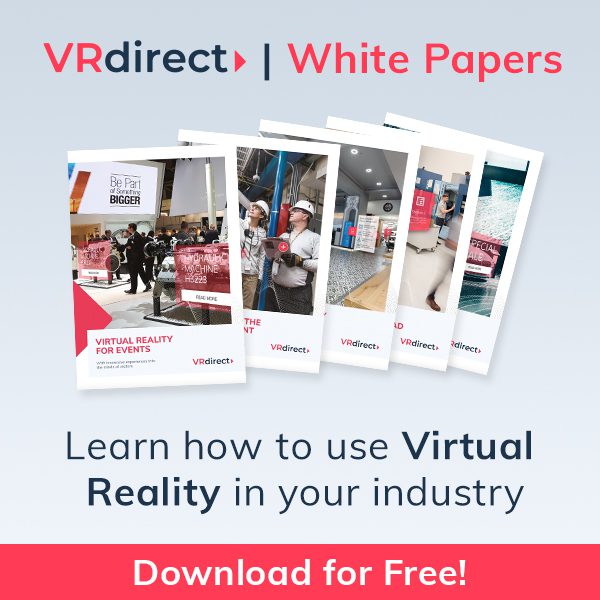Today, digital learning is widely acknowledged, practiced, and welcomed by all segments of our society. When combined with advanced technologies such as Virtual Reality, the impact and outcome are enhanced substantially. This article highlights the positive impact, use cases, and other benefits of combining VR with digital learning at an academic and professional level.
If we were to look back at the 21st century from the distant future, we’d see our generation as the first to learn anything from anywhere. We are googlers. Googling our way to better careers, better graduation results, better skills, you name it. Internet has genuinely decentralized learning, breaking free education and knowledge from the confines of a library, school, or institute. Today, a person sitting in the remotest village of Afghanistan can take up a distance learning course in Australia and have an equal chance at a decent career. Be it YouTube or certification courses by Coursera, the world of learning is in our palms.
From coders to digital marketers, musicians to entrepreneurs, the internet has made learning accessible. ‘Self-taught’ people are now building successful careers without formal training in their respective fields.

Now it may seem all great and easy, but the ship doesn’t sail that smoothly in the real world. Quite a few challenges hinder digital learning, especially the learning-environment problem. An inclusive environment is essential to a wholesome learning experience. Let’s take a look at schools. During the pandemic, many schools moved to online learning. Even though it was an essential step to ensuring continuity, it took away the learning that happens when we meet people – more like emotional-wholesome learning.
In online learning, it is hard to gauge whether a student is attentive. Similar hindrances deter quality learning at college, university, and jobs. On a lighter side, we saw the internet flooded with videos of students faking digital classroom attendance.
But what if we combine online learning with technology to overcome such challenges? A technology that allows learning from wherever, yet retains the feeling of being in the real environment? This is what virtual reality brings to the world of digital learning. Read on.
VR in education and training is not just an idea but a current-day tool used by educators and trainers globally. But to understand how VR enhances digital learning, we have to look beyond the good things digital learning offers. We have listed a few downsides to digital learning that VR can help tackle efficiently.


Limitations to current digital learning
- The lack of in-person interaction:
No matter how many tutorials we watch, the in-person dynamic that traditional learning environment offers is irreplaceable. To feel and interact with other humans still counts for a wholesome experience and is a basic human need. It is how we are programmed. With e-learning or digital learning, the human touch factor is a miss. - Increases accountability of the learner:
Schooling has conditioned us to learn in a social environment monitored incessantly. For example, if in a school classroom we dozed off, a nudge or a stern voice shook us back into an alert state. But with digital learning, we are solely accountable for our learning. In most scenarios, students incline to cheat occasionally, if not every time. In other words, digital learning may promote carelessness in trainees and students. - Distraction is another factor that hampers learning in a digital setup.
Learning in surroundings where everyone is focused on one goal substantially enhances the learning experience and overall undertaking of the subject or task. But with remote learning, the semi-physical environment hampers flow state, which is critical to quality learning. - Excessive screen time and lack of physical movement:
Traditional learning, although sedentary too, requires students to at least commute from home to school or university. Whereas digital learning limits movement, which is not great for overall health, mental and physical. Also, the lack of social interaction negatively impacts overall personality development.
How VR eliminates the roadblocks in digital learning
Improved focus
VR, by make, is immersive, which alone counters many hindrances to quality learning. The immersive 3D environment helps mask the visual distraction in the physical environment. As a result, we see more focused learning sessions and a higher engagement rate.
Interactive learning
What digital learning or distant learning lacks today is that users cannot interact with the prerecorded video lessons. But in VR-enabled simulators, user can take their time and explore the subject while being able to manipulate the various elements of the subject. VR controllers allow users to inspect, move and grab objects. Take the healthcare education sector as an example. Medical students are using virtual surgery rooms to explore the human anatomy to their hearts' content, which leads us to the next point ...
Stress-free learning
Students practicing virtual sections need not worry about risking life and can focus better on honing their skills. Similarly. in the industrial manufacturing sector, companies can now digitally train and educate employees to operate various machines on the floor without the stress of causing accidents or damages. A known fact - stressless learning enables students to grasp concepts faster and be more creative. Isn't that what education should be about?
Experiential learning
Watching driving lessons versus driving one, which one do you think will yield results? The latter, of course. Traditional digital learning methods are equivalent to watching driving video tutorials, whereas VR-enabled learning is equal to getting your hands behind the wheel. VR facilitates experiential learning, i.e., learning by doing. Even enterprises are using VR for training employees on more complex machines and tools. Here is a real-world use case of how Bühler Motor GmbH uses VR for Training & Onboarding.
Engaging gamified learning
Gamification is another effective way to make boring, tedious subjects more interesting. IT sector to businesses, universities to governments are all embracing gamified learning. In other words, gamified learning simulations make learning more interactive, engaging, and fun while improving information retention substantially.
Explore our article Reinventing education with Virtual Reality.
So overall, VR in digital learning has many use cases. As long as something can be taught or learned, it can use VR to amplify the takeaway and make it more interesting. VR is the future of learning. But the good news? The future is here. Obviously, not for the traditionalists, but futurists – they are already living it. And they have no reservations about it whatsoever.
Most industries have adapted VR-enabled digital learning to create a work-ready workforce. Besides all the chaos it brought along, the Corona pandemic has only favored VR. From education to workforce training, we are seeing an industry-wide acceptance of VR as a viable solution for such disruptions.
Moving out of the classroom at the elementary level, here are some real-world use cases for VR-enabled digital learning across business verticals.
Learning soft skills
In our super competitive world, soft skills make all the difference in one's career. Several studies show that employees tend to successfully apply the soft skills they learn via VR training modules than traditional sessions. Moreover, it is much more cost-effective and easily accessible.
Learning new skillsets
As mentioned before, VR is an immersive technology that makes learning more experiential. It means that employees learn new skills much faster and retain more compared to text or visual-based learning. Gamified content also makes learning more engaging and fun.
High-risk job training
Most VR courses require controllers to interact with the 3D content of the VR simulations. It covers an essential aspect of learning - muscle memory. Think about how crucial it can be for work that exposes employees to risky environments, such as oil rig operators, windmill turbine technicians, or nuclear power plant staff. VR-based learning can help eliminate the hazards of a job while allowing technicians to get excitingly close to actual learning.

Conclusion:
VR is exciting and practical – a promising solution to many digital learning challenges we face today. And once we overcome these challenges, the overall takeaway from online learning will amplify manifolds. So much so that we might see it replace the not-so-flexible methods of today. But then why the hold-up?
Rest assured that VR will eventually become indispensable for learning. In fact, irreplaceable. If you too want to know how to establish digital learning with VR in your educational institution, schedule a free demo with us.





